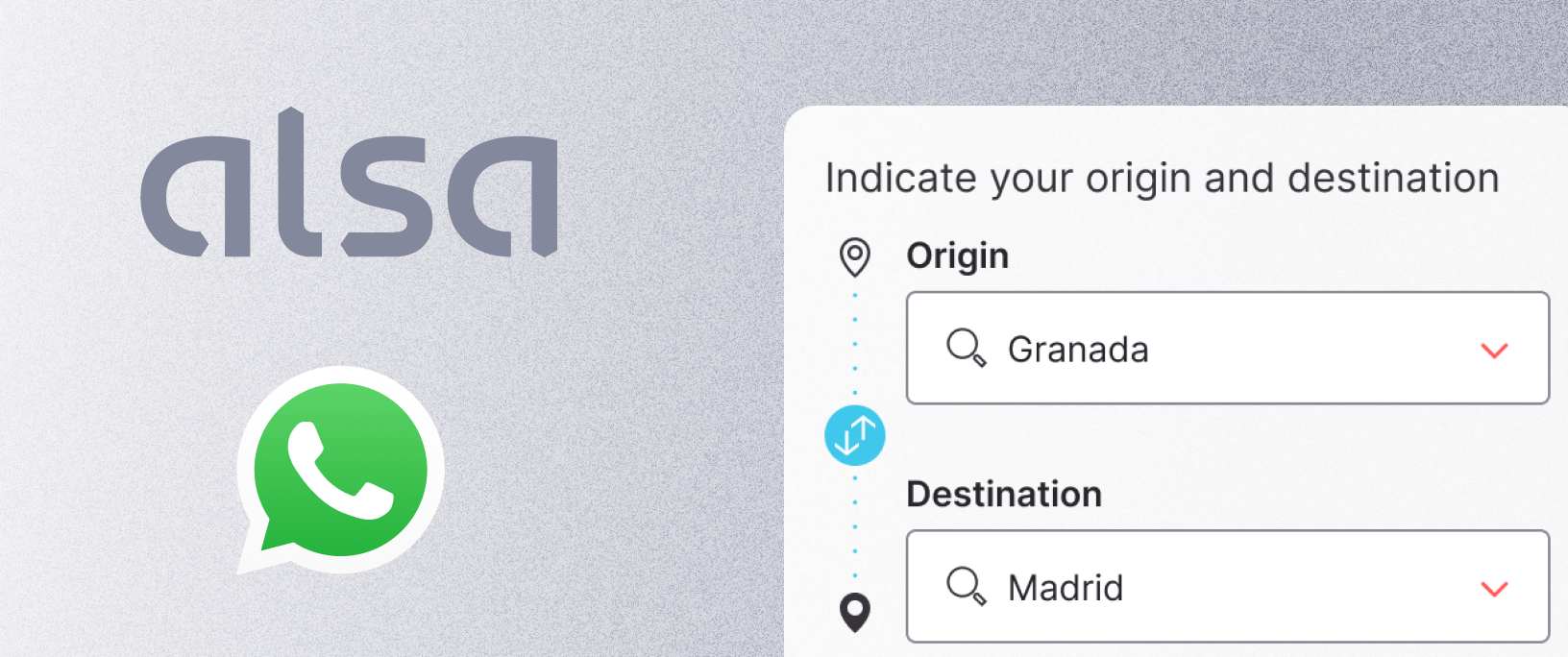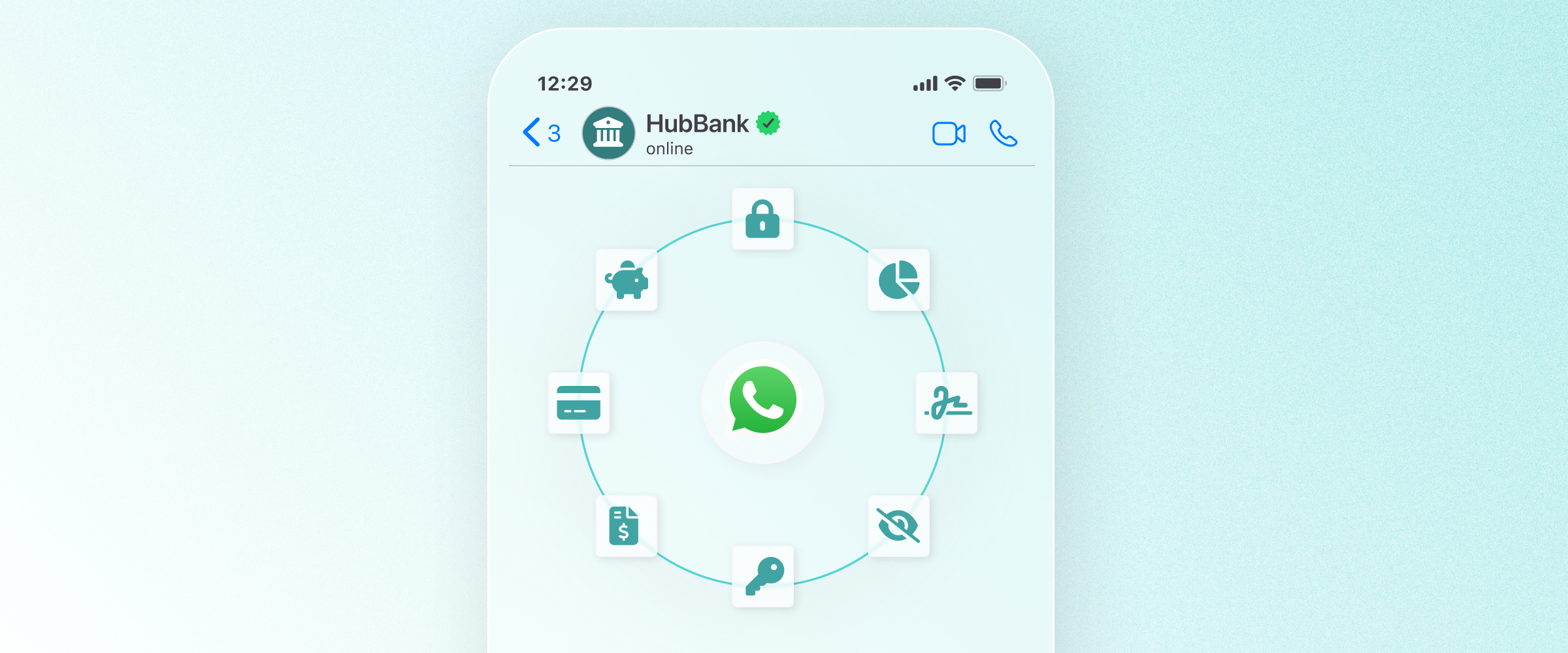
Enterprise companies typically require more complex solutions, regardless of the technology they wish to adopt. Chatbots are no exception. When it comes to selecting a customer service chatbot platform, enterprises must consider how the platform will meet their unique needs today, and perhaps more importantly, how it will adapt to meet future needs.
In this article, we'll review key things to consider when choosing a customer service chatbot platform. We'll also explain why our product, Hubtype, is uniquely suited to meet each of these needs at the enterprise level. Of course, we're biased, but by the end of this post, you'll understand why.
5 Things enterprises need in a customer service chatbot platform
1. Integration with enterprise infrastructure
What makes today's chatbots different from the chatbots of the past is their ability to intelligently handle requests and personalize experiences. We've evolved past the days where chatbots were a novelty for only the most basic of interactions.
Today, well-built chatbots can take a person's history with your company into consideration; things like previous purchases, their location, and past interactions all make the experience more relevant. It's not just about automating workflows to save time and money, but doing it in a way that actually makes experiences better.
However, at the enterprise level, this can be a challenge. The customer information that powers contextual, relevant experiences typically lives in many different silos. It's hard to get a clear picture of the customer because data is not easily passed across departments.
How Hubtype helps:
With Hubtype, our enterprise customer service chatbot platform can integrate with legacy systems and infrastructures. Through application programming interfaces (APIs) we can connect to all of the different locations where important customer information lives.
You can modernize your tech stack or legacy system without having to reinvent the wheel. In other words, you can leverage data and functions from your existing software, making it available as services via an API.
2. Consistency across multiple channels, geographies, and languages
By now, you know how important it is to have an omnichannel strategy. Omnichannel experiences are proven to increase key metrics like customer satisfaction, loyalty, and customer lifetime value.
But again, this is easier said than done for enterprise companies. With many different channels, markets, and even languages, ensuring consistent experiences is no easy feat. Many customer service chatbot platforms can aggregate channels, but they require you to build separate conversational flows for each channel and language. As a result, the scope of enterprise chatbot projects can quickly spiral out of control.
How Hubtype helps:
With Hubtype, you're able to build one conversational and use it across all of your customer service channels. That means you only have to build a conversational flow once, instead of once per channel. This saves upfront, but also on the backend when changes are inevitably necessary.
Our platform also works for a global audience. You train your chatbot in one language, and it can understand one hundred different languages. Normal AI needs to be trained for every single language it uses.
As a result, you'll gain the ability to test and adapt across channels and markets. That's a level of agility that other customer service chatbot platforms just can't match.
3. A highly visual/graphic interface
At the enterprise level, experiences that are limited to basic text messages won't cut it. For a seamless customer journey, your chatbot needs to perform more complex tasks.
Your customer service chatbot platform should incorporate the best out of text interfaces (simplicity, natural language interaction) and graphical interfaces (multimedia, visual context, rich interaction). This is a powerful combination that provides a better user experience than traditional chatbots, which rely only on text and NLP.
How Hubtype helps:
With Hubtype, you can incorporate rich elements into the conversational flow. Web views, for example, are great for when you need complex components or when data privacy and security are important. For instance:
- Login flows
- Checkout processes
- Browsing a catalog
- Selecting seats on a flight
These features are part of what separates a basic customer service chatbot platform from an enterprise-grade solution.
4. A platform that will grow with your business
Enterprises need technology that is flexible and adaptable. As the demands of customers change and the needs of your different business units evolve, you will need a customer service chatbot platform that can evolve with it.
How Hubtype helps:
Hubtype's solutions are built to withstand the test of time. Our platform is adaptive to technological change, and can easily adjust as your tech stack changes. When you work with Hubtype, you get more than just a product, you get a partner that will help you manage your entire conversational strategy.
5. Enterprise-grade security
Last but not least: security. It's no joke at the enterprise level. One small privacy or security issue can have major ramifications. As such, enterprises need a customer service chatbot platform that can meet and exceed regulatory requirements.
How Hubtype helps:
At Hubtype, we're dedicated to information security, rigorous testing, and strict adherence to global privacy standards. By partnering with Hubtype, a GDPR-compliant service provider, our clients save time, limit their exposure to data breaches, and avoid regulatory penalties.
All of Hubtype's products are designed to meet European, Canadian, and US privacy laws. No matter where you are, you can be sure that our products and services comply with any privacy framework, including the GDPR.
Learn more about Hubtype for enterprise companies here.









.jpg)

